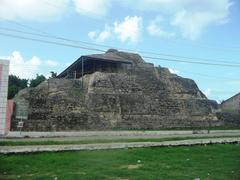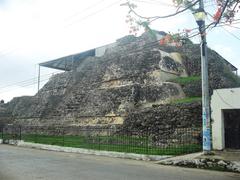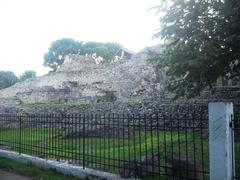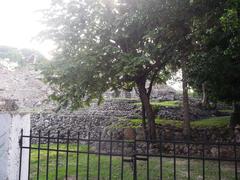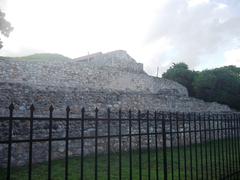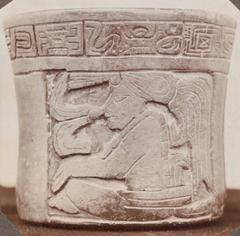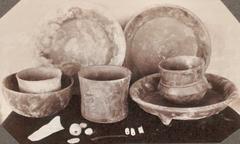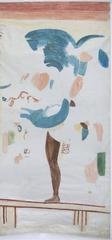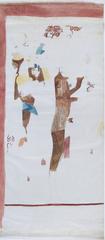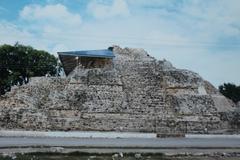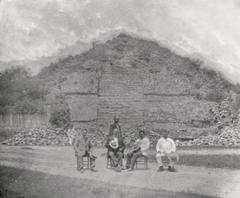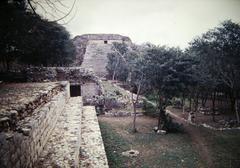
Acanceh: Visiting Hours, Tickets, and Historical Sites in Yucatán, Mexico
Date: 14/06/2025
Introduction: The Living Legacy of Acanceh
Nestled in the heart of Mexico’s Yucatán Peninsula, Acanceh (pronounced ah-can-KAY) is a remarkable convergence of ancient Maya heritage and vibrant contemporary life. As one of the region’s most significant Early Classic Maya sites, Acanceh offers visitors the rare opportunity to explore monumental ruins—such as the renowned Pyramid of the Masks and the intricately decorated Stucco Palace—set within a living town. Here, the remains of a flourishing ancient city intertwine with colonial-era churches, bustling markets, and enduring Maya traditions, creating a rich tapestry of history and culture (Yucatán Today, Arqueología Mexicana, Casa Loltún).
This comprehensive guide covers everything you need to plan your visit, from opening hours and ticketing to in-depth historical context, travel tips, and highlights of Acanceh’s unique role in both ancient and modern Yucatán.
Historical Overview: From Maya Metropolis to Modern Town
Origins and Development
Acanceh’s origins date back to the Early Classic period (circa 5th–6th centuries CE). Archaeological research reveals a thriving Maya urban center covering approximately 3 square kilometers, with hundreds of pre-Hispanic structures now interwoven with the modern town (Yucatán Today). Its strategic location facilitated trade and communication across the peninsula, making Acanceh a nexus for commerce, politics, and religious activity.
Political, Economic, and Religious Importance
At its zenith (6th–9th centuries CE), Acanceh was a powerful city-state. Its monumental architecture—including the Pyramid of the Masks, the Stucco Palace, and ceremonial plazas—reflects its central role in Maya religious and political life. The detailed stucco masks on the main pyramid, representing the sun god Kinich Ahau, underscore the spiritual significance of Acanceh’s rulers and their claimed connection to the divine (Tourist Places Guide).
Architectural Achievements
The city is distinguished by:
- The Pyramid of the Masks: Notable for its large stucco masks of Kinich Ahau, this pyramid stands beside the town’s main plaza.
- The Stucco Palace: Featuring elaborate stucco friezes and believed to have served administrative or elite residential functions.
- Urban Layout: The ancient city’s ceremonial plazas, residential areas, and public buildings are today partially overlayed by modern structures, illustrating centuries of cultural layering (Arqueología Mexicana).
Colonial and Contemporary Transformations
The arrival of the Spanish in the 16th century brought dramatic change. Colonial churches, such as the Church of Our Lady of the Nativity, were built atop or near Maya structures, reflecting both continuity and transformation of the landscape (en-yucatan.com). Today, Acanceh remains a vibrant community where Maya heritage and modern Yucatán coexist.
Visiting Acanceh: Hours, Tickets, and Accessibility
Opening Hours
- Archaeological Zone Hours: Open Tuesday to Sunday, 8:00 AM to 5:00 PM. Closed Mondays for maintenance (Casa Loltún).
- Best Time to Visit: Mornings are ideal to avoid the midday heat and enjoy a quieter experience.
Ticket Information
- Entrance Fee: Approximately 60–70 MXN for adults (foreign visitors); discounts available for children, students, and seniors (Casa Loltún).
- Purchase: Tickets can be bought at the entrance or, in some cases, online via official tourism websites.
- Guided Tours: Available on-site or through local operators for an extra fee, offering deeper historical context.
Accessibility
- Facilities: The site has some paved paths and basic amenities, but expect uneven terrain typical of ancient ruins.
- Mobility: Some areas may be challenging for those with mobility issues; advance arrangements with local guides can help.
Main Archaeological and Cultural Highlights
The Pyramid of the Masks (La Pirámide)
Acanceh’s most prominent structure, this 11-meter-high pyramid is famed for its monumental stucco masks depicting Kinich Ahau. The masks’ artistic details and their strategic placement illustrate the city’s religious and political significance. Some masks show deliberate defacement, possibly from ritual or later iconoclastic acts (Arqueología Mexicana).
The Palace of the Stuccoes (Palacio de los Estucos)
Located a short walk from the main plaza, this palace boasts intricate stucco friezes in high relief, portraying deities and supernatural beings. The building exemplifies Maya craftsmanship and cosmological symbolism (Arqueología Mexicana).
Living Heritage
Acanceh’s ruins are uniquely integrated into the daily lives of its residents. Visitors can observe the blending of ancient and modern through the town’s markets, colonial churches, and ongoing Maya traditions (Yucatán Today).
Cultural Life and Community Traditions
Markets and Festivals
The local market is a lively center for traditional foods, crafts, and daily commerce. Annual events like the “Tianguis Turístico Artesanal, Gastronómico Acanceh ¡Te Va a Encantar!” showcase regional cuisine, crafts, and music (Yucatán Acontece).
Religious and Secular Celebrations
Experience the vibrant jarana dance, religious processions, and the vaquería rodeo festival, where Maya and colonial traditions merge in music, dance, and local cuisine (The Yucatán Times, Yucatán Today).
Artisanal Crafts
Local artisans produce embroidered textiles, huipiles, and pottery, reflecting both Maya and colonial aesthetics (Yucatán Magazine).
Practical Travel Tips
- Getting There: Acanceh is about 30–35 minutes from Mérida by car or colectivo; local transportation includes trici-taxis.
- What to Bring: Cash (small bills), water, sunscreen, a hat, comfortable shoes, and a camera.
- Best Months: November–April for cooler, drier weather; avoid midday heat, especially in April–May.
- Respect Local Customs: Observe the midday siesta (2–4 pm), dress modestly, and ask permission before photographing people.
- Eco-Friendly Practices: Use biodegradable products when swimming in nearby cenotes (Casa Loltún).
Nearby Attractions
- Cenotes: Santa Bárbara and Homún offer swimming and snorkeling in stunning natural pools (Casa Loltún).
- Haciendas: Visit restored colonial estates like Mucuyché for a glimpse into Yucatán’s agricultural history.
- Other Maya Sites: Consider combining Acanceh with trips to Uxmal, Mayapan, or Mérida’s historic center.
Community-Based and Sustainable Tourism
Acanceh is a leader in community-based tourism, offering workshops, artisan visits, and sustainable experiences that empower local residents and preserve cultural heritage (24 Horas Yucatán).
Frequently Asked Questions (FAQ)
Q: What are the visiting hours for Acanceh?
A: Tuesday to Sunday, 8:00 AM–5:00 PM. Closed Mondays.
Q: How much is the entrance fee?
A: 60–70 MXN for adults; discounts for children, students, and seniors.
Q: Are guided tours available?
A: Yes, book on-site or via local operators.
Q: Is the site accessible for visitors with mobility challenges?
A: Some areas may be difficult; contact local guides for assistance.
Q: What’s the best way to get there?
A: By car, taxi, or colectivo from Mérida.
Q: Can I combine Acanceh with other attractions?
A: Yes, cenotes and haciendas are nearby and make for a great day trip.
Conclusion: Acanceh—A Window into Yucatán’s Past and Present
Acanceh’s unique blend of monumental Maya ruins, colonial heritage, and living Maya culture makes it a compelling destination for culturally curious travelers. With accessible visiting hours, affordable tickets, and a wide array of cultural experiences, Acanceh welcomes visitors to immerse themselves in the region’s rich legacy. For those looking to deepen their understanding of Yucatán’s archaeological wonders and engage with local communities, Acanceh is not to be missed.
For more information, travel tips, and the latest updates, consult the resources below and consider downloading the Audiala app for personalized recommendations.
Visuals and Interactive Resources
Alt text: Pyramid of the Masks at Acanceh archaeological site in Yucatán Alt text: Stucco Palace with intricate stucco decorations at Acanceh Alt text: Map showing the location of Acanceh archaeological site in the Yucatán Peninsula
Further Reading and Official Resources
- Yucatán Today: Acanceh: A Meeting of Three Cultures
- Arqueología Mexicana: Acanceh, Yucatán: Cronología
- Casa Loltún: Visiting Acanceh
- Yucatán Today: Acanceh and the Enduring Maya Legacy
- Yucatán Magazine: Hustle and Bustle Among Ancient Temples in Acanceh
- Yucatán Acontece: Acanceh’s Tianguis Turístico
- 24 Horas Yucatán: Community Tourism in Acanceh

